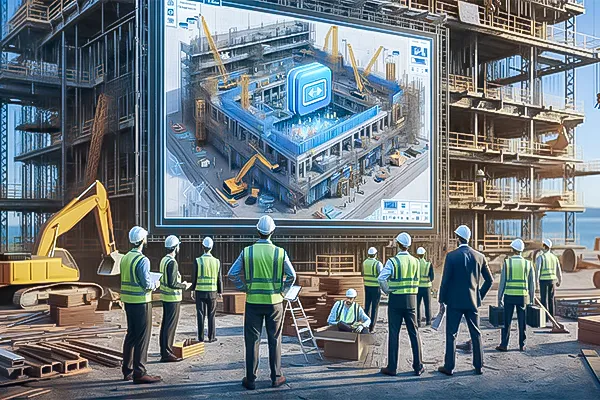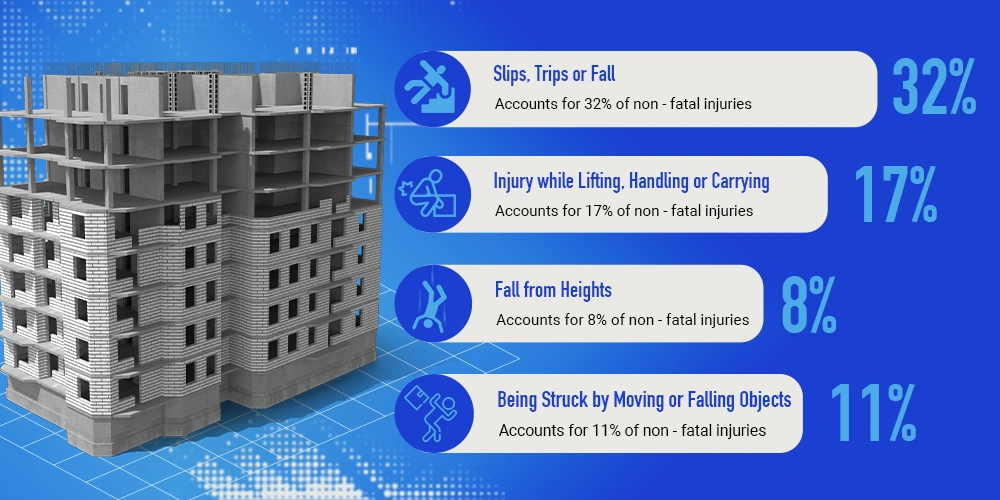
BIM for Safety Management: Using BIM to Enhance Construction Site Safety
Did you know that there are 45 fatal injuries to construction worker in year 2022/23 in Great Britain? With death rate in construction industry going three times higher than in the transportation and storage industry, it becomes imperative to adopt practices that enhances safety at the construction sites; BIM for safety management can help us mitigate these risks.
For the said reasons, various bodies and businesses are committing resources to make construction sites more and more safe for their workers. Despite all technological advancements, accidents continue to occur. However, digital revolution is now opening up new horizons to improve safety and working conditions of the workers. BIM (Building Information Modelling) has emerged as one of the major tools that can improve safety standards greatly.
BIM for Safety Management – How It Improves Risk Management
This is how BIM improves safety of the workers and make the practice more efficient:
1. Reducing the Risks of Accidents
Before diving into details, let’s have a quick recap of BIM concepts. BIM is used by industry experts to generate accurate and detailed digital representations of the physical and functional characteristics of construction and building sites. Instead of having access to fixed representations, stakeholders now can access powerful digital models that are being used across the world to improve efficiencies and risk management during the project lifecycle.
Poignantly, very few companies are harnessing the power of these models to reduce risk of fatal accidents.
2. Safety Management
You can use BIM to improve safety of the construction project at every stage. For instance, contractors can highlight major hazards to craft a safety and health file for the project. In case, any such information already exist, contractors can use new assessments to add details to existing data.

Access to the latest information to all stakeholders is an integral part of BIM. Therefore, these digital information systems make it easy for contactors to share updated information with all stakeholders. So, if contractors find potential safety hazards and make changes to design, it can be easily reflected in the updated information. Once complete, the BIM can then be used by the contractor to update practical, on-site health and safety measures.
Likewise, once the project has been finished, stakeholders can keep details within the BIM model in their existing form.
3. Integrating Safety Protocols Directly Into Models
Additionally, safety contractors can harness power of BIM to integrate safety protocols directly into the models. They can position safety barriers, signage, and protective measures throughout the site layout. Furthermore, they can use these models during briefings and trainings to spread awareness about safety protocols. These training sessions can be used to communicate potential hazards to workers and measures taken to combat the same.
Thus, stakeholders cannot only improve safety measures at construction sites by integrating safety protocols in the BIM models, they can also make their projects cost efficient by significantly reducing downtime associated with accidents and safety breaches.
4. Effective Probe into Accidents
To assume that BIM or digital technology will altogether eliminate accidents and bring fatality rate to zero is quite unrealistic. However, it can reduce the same significantly. Besides, BIM will empower all stakeholders, including the safety contractor, to effectively probe into such accidents and learn from previous mistakes.
Let’s assume that contractors have used BIM consistently from the beginning of the project. Doing so will allow them to have access to comprehensive information about certain area of the project. They can use this information to go through previous iterations of risk assessment and detect areas to further consolidate safety provisions for the next projects. Likewise, they can use previous iterations to change procedures to avoid such accidents in future.
5. Improving Mental Well-Being
Irrespective of how cliché it sounds, we will remind you that construction is complex, and so is BIM. The same has been reflected in reports of the Center for Workplace Mental Health as it put construction in top rankings among industries where mental health issues continue to persist and grow. The main reason behind these undesirable rankings is long work hours and the deadline-driven nature of this fast-paced industry. Likewise, the high fatality rate in construction industry is also a key factor behind stress.

BIM makes the whole project delivery process efficient. Industry leaders use it to increase safety and health on on-site projects. Project managers and contractors harness BIM’s power to craft strategies that improve risk management and prevent accidents. Thus, BIM for safety management can help reduce stress factor significantly.
BIM for Safety Management – Make Your Practice with DDC Solutions
Want to make your practice more cost-efficient by reducing financial waste and improving risk management by incorporating BIM into your practice, reach out to us for a free consultation. Our BIM experts will hold an in-depth discussion with you to understand your requirements, craft a bespoke BIM strategy, and to give you a no-obligation quote.
We have made practices of industry leaders such as Higgins Partnerships, David Kohn Architects, and Stiff + Trevillion efficient. Plus, we are headed by one of the pioneering forces behind BIM revolution, Jimi Clarke. And this is the very reason we tell our clients that “BIM is not something we do, BIM is something that we achieve.”

